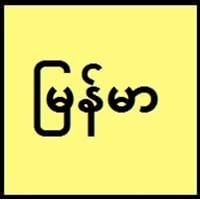Japanese vs Burmese
- In Japanese Language, there are 4 different ways to address people: kun, chan, san and sama.
- There are many words in Japanese language which end with vowel letter, which determines the structure and rhythm of Japanese.
- The naming of people in Burmese is strange. There is no last name, often name is rhymed such as Ming Ming, Mo Mo or Jo Jo.
- It appears as odd language to many people because it has peculiar pitch register, tonal form as language.
Japanese and Burmese Language History
Comparison of Japanese vs Burmese language history gives us differences between origin of Japanese and Burmese language. History of Japanese language states that this language originated in 1185 whereas history of Burmese language states that this language originated in 1113 AD. Family of the language also forms a part of history of that language. More on language families of these languages can be found out on Japanese and Burmese Language History.
Japanese and Burmese Greetings
People around the world use different languages to interact with each other. Even if we cannot communicate fluently in any language, it will always be beneficial to know about some of the common greetings or phrases from that language. This is where Japanese and Burmese greetings helps you to understand basic phrases in Japanese and Burmese language. Japanese word for "Hello" is こんにちは (Kon'nichiwa) or Burmese word for "Thank You" is ကျေးဇူးတင်ပါသည် (kyaayyjuutainparsai). Find more of such common Japanese Greetings and Burmese Greetings. These greetings will help you to be more confident when conversing with natives that speak these languages.
Japanese vs Burmese Difficulty
The Japanese vs Burmese difficulty level basically depends on the number of Japanese Alphabets and Burmese Alphabets. Also the number of vowels and consonants in the language plays an important role in deciding the difficulty level of that language. The important points to be considered when we compare Japanese and Burmese are the origin, speaking countries, language family, different greetings, speaking population of these languages. Want to know in Japanese and Burmese, which language is harder to learn? Time required to learn Japanese is 88 weeks while to learn Burmese time required is 44 weeks.





